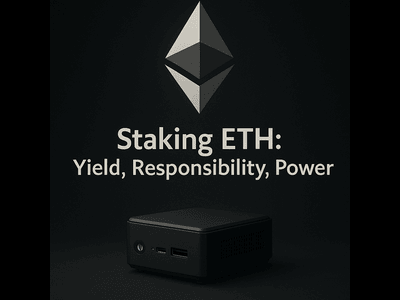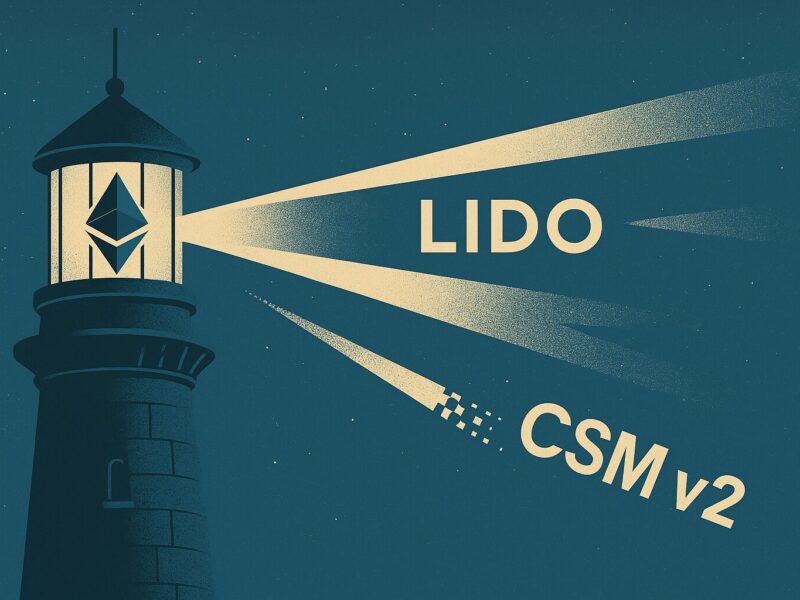When people first approach staking in Ethereum, they often ask two things. First: is running a validator actually profitable? And second: can I do it myself, even with just a few ETH?
The answer to both depends on how deeply you’re willing to engage with the underlying machinery of Ethereum, and whether you’re prepared to operate not just as a participant, but as an active, responsible steward of the network.
What’s the Real Yield of Being a Validator?
Let’s begin with the idea of profitability.
If you already own the full 32 ETH required to run a validator, staking it directly with Ethereum yields around 4.5% to 5.0% annually. At today’s prices, that translates to something like 1.5 ETH per year, or roughly $5,000–$6,000. It’s not interest in the traditional banking sense, but rather your share of the rewards Ethereum hands out for keeping the network secure, live, and honest.
But this reward doesn’t come passively. You’re not simply depositing money into a savings account. You are the validator now. You must run a machine, keep it online, ensure it performs duties accurately, and defend it against both downtime and slashing events. It’s yield, yes but yield that’s earned, not given.
Hosting validator in cloud or at home?
Now, what about the logistics? Could you just spin up a virtual machine on AWS, run a client like Prysm or Lighthouse, and start printing rewards?
Technically, yes. Economically and philosophically? It’s a terrible idea.
Running a validator in the cloud, especially with centralized providers like AWS or Google Cloud, undermines Ethereum’s core principle of decentralization. Worse, it’s expensive. The infrastructure requirements modest by modern standards, just 2–4 cores, 16 GB of RAM, and a terabyte or so of SSD may sound reasonable. But cloud pricing doesn’t care about modesty. A reliable AWS setup can easily run $150 to $200 per month, which quickly eats up any staking yield you might earn. Over a year, you’re paying nearly as much in cloud fees as you’re earning in ETH. The margins vanish.
Even more worrying is the concentration risk. Cloud providers host thousands of validators. If AWS goes down, as it has, multiple times, it can knock out swaths of the validator set, halting Ethereum finality and triggering emergency protocols. Ethereum’s resilience comes from its diversity. When too many validators share the same infrastructure, the system becomes brittle.
A better path is to host your validator at home. For a one-time hardware cost perhaps $300 to $600, you can build or buy a compact, quiet, low-power machine that sits under your desk and hums along quietly for years. With just 5–10 watts of power draw, it’ll cost you less than a Netflix subscription to operate. More importantly, it anchors your participation in Ethereum to real physical infrastructure – your own infrastructure. This is how decentralization is won, one home node at a time.
Still, not everyone has 32 ETH lying around. And here, Ethereum draws a hard line in the sand.
The protocol itself demands that each validator be backed by exactly 32 ETH. No more, no less. You cannot stake with 5 ETH and run a partial validator. Nor can you stake 96 ETH and run a super-validator. Ethereum’s design keeps the playing field level: one validator, one identity, one set of duties. It’s a brilliantly simple structure that resists centralization and makes rewards predictable and fair.
Enter Liquid Staking: Convenience at a Cost
So what if you have less than 32 ETH? What then?
That’s where liquid staking protocols like Lido and Rocket Pool enter the story. They allow users to pool their ETH together, mint liquid tokens like stETH or rETH, and participate in staking without needing to touch validator infrastructure at all. With Lido, you can deposit 1 ETH, or even 0.01, and receive stETH in return. Your funds are pooled, delegated to a validator, and begin earning rewards. It’s elegant, simple and heavily abstracted.
But here’s a critical point: you are not the validator. You don’t run the software. You don’t monitor the node. You don’t participate in consensus. You’re a passive investor. The validator is chosen by the Lido DAO, from a handpicked list of professional operators. You earn yield, yes but you surrender all operational control and responsibility.
What if you want to run validator but don’t have 32 ETH
Now suppose you’re a bit more ambitious. Let’s say you have 5 ETH, maybe 8. You’re comfortable setting up a machine at home. You want to run something, to be part of the infrastructure. Can you?
Not with Lido. But with Rocket Pool, you can.
Rocket Pool offers a hybrid model. If you have 8 ETH and are willing to stake some RPL tokens as collateral, you can become a mini-pool operator. Rocket Pool contributes the remaining 24 ETH from its user pool, and together your combined stake launches a full validator. You host the machine. You run the node. You shoulder the risks and reap a greater share of the rewards. It’s the closest you can get to solo staking with less than 32 ETH, and it’s battle-tested, trusted, and live.
DVT: The Future of Shared Validators
Then there’s something new on the horizon: DVT, or Distributed Validator Technology. This isn’t just pooling ETH. It’s pooling responsibility. Projects like Obol and SSV Network allow multiple participants to co-run a validator, with cryptographic coordination. Your 5 ETH becomes a piece of a distributed validator, spread across many nodes, each operated by different people. If one goes down, the system keeps running. If one gets hacked, the keys remain safe.
It’s early tech, but it’s real and it’s coming. Eventually, protocols like Lido may incorporate DVT into their validator selection, opening the door for permissionless operators to join without needing 32 ETH. But until then, Rocket Pool remains the only path for undercapitalized but technically capable individuals to host validators themselves.
And that, in the end, is the landscape: solo staking for the sovereign, Lido for the passive, Rocket Pool for the ambitious, and DVT for the future.
Each option reflects not just a financial choice, but a philosophical one. What kind of staker are you? What kind of role do you want in Ethereum’s evolving governance? And how much of the weight of this new world are you willing to carry?
Because staking, in the end, is not just yield. It is responsibility. It is trust. And it is power.

